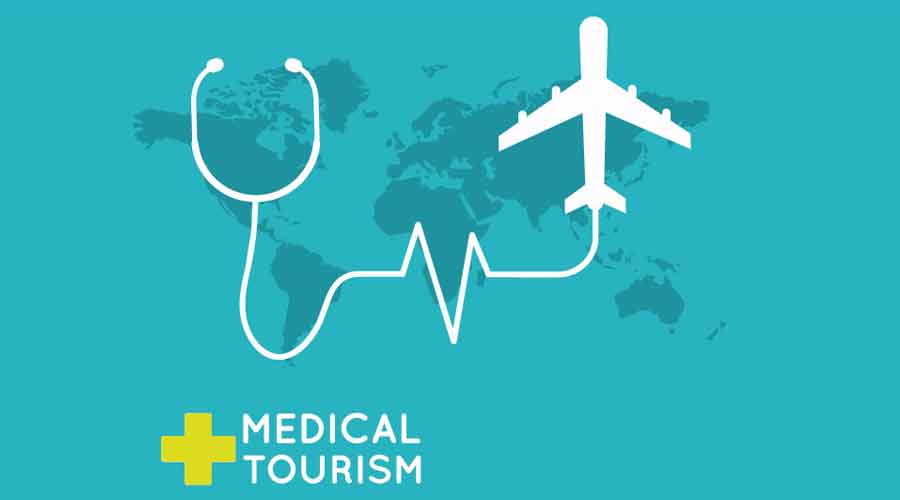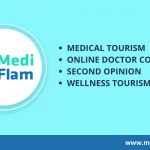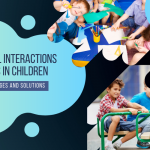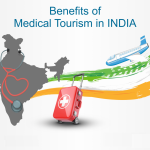COMMON SIGNS THAT SHOW YOUR CHILD MIGHT BE SUFFERING FROM CARDIAC PROBLEMS
- The development of the heart in a human embryo is the culmination of multiple steps. These include heart tube formation, cardiac looping, chamber septation, and development of appropriate inflow and outflow tracts. The conduction system of the heart and coronary artery system also develop during this period.
- After all the organs are formed, three levels in normal fetal circulation are observed which close after birth. These are the ductus venosus, the foramen ovale, and the ductus arteriosus. These are important for fetal circulation but can pose problems if not closed after birth.
- Functional closure usually occurs during the transition to postnatal life. Congenital heart defects are those that are present since birth. These range from simple ones like an atrial septal defect or ventricular septal defect which doesn’t require surgery to critical ones like hypoplastic left heart syndrome.
- Critical heart defects usually require surgery within 1 year after birth. Other common defects are the Tetralogy of Fallot, coarctation of aorta, and Patent Ductus Ateriosus (PDA). Some of the early symptoms of heart problems include cyanosis (pale gray or blue skin color), rapid breathing, swelling in the legs, hands, ankles, belly, and around the eyes, shortness of breath during feeding which in turn leads to poor weight gain, shortness of breath and tiredness during physical activity, and sometimes fainting during physical activity.
- If ASDs (Atrial Septal Defects) is left untreated till adulthood, it can lead to pulmonary hypertension, exercise intolerance, atrial arrhythmias, increased risk of paradoxical embolus or stroke, and eventually heart failure. In VSDs (Ventricular Septal Defects), symptoms may mimic that of heart failure which is sweating with feeds, poor weight gain, tachypnea, tachycardia, and an increase in heart size. Infants with aortic valve diseases might present with chest pain during exercise, syncope, heart failure, or even death. Children with slight coarctation present with symptoms of congestive heart failure like feeding intolerance whereas with more coarctation present with symptoms of shock.
- Children with coarctation also present with elevated systolic pressures in the upper extremities and lower systolic blood pressures in the lower extremities. However, infants may only present with lower extremity hypotension. Children with pulmonary valve disease may have right-sided heart failure.
- Heart diseases in children can manifest in different forms and may occur as a single disease mentioned above or a combination of them. Pediatric cardiac treatments and hospitals in India cater to many patients that include both domestic and international patients. More and more international patients are now putting increased faith in the expertise of Indian doctors and the excellent infrastructure of Indian hospitals.
WHAT IS A PEDIATRIC HEART CONDITION?
Pediatric heart condition refers to a set of heart diseases that are present since birth in many children and are by far the most common types of congenital defects. Pediatric heart defects types are varied and are classified depending on where these occur. Some of the most common ones include septal defects like Atrial Septal Defects (ASDs), Ventricular Septal Defects (VSDs), coarctation of aorta, Patent Ductus Arteriosus, Tetralogy of Fallot, pulmonary valve diseases, aortic valve disease, mitral valve disease, vascular rings, transposition of great arteries, double outlet right ventricle with pulmonic stenosis, tricuspid atresia, critical pulmonic stenosis, pulmonary atresia, Ebstein’s anomaly of the tricuspid valve, total anomalous pulmonary venous connection, and truncus arteriosus communis. Many congenital heart diseases can lead to heart failure referred to a pediatric heart failure. These include ASD (Atrial Septal Defect), VSD (Ventricular Septal Defect), common atrioventricular canal, aortic valve disease, and pulmonary valve disease. There are special pediatric cardiologists that treat these conditions. A high amount of success has been achieved in the field of pediatric cardiology with the latest advances in surgical techniques and instruments.
SIGNS OF CARDIAC PROBLEMS IN CHILDREN
The signs and symptoms of cardiac problems in children stem from the pathology that they are suffering from. The usual ones include shortness of breath, cyanosis, swelling, poor weight gain, and symptoms of congestive heart failure. Some heart defects remain asymptomatic and do not pose any risk to the life of the infant whereas some may require immediate interventions or else the child may lose a life.
CHEST PAIN
Pediatric chest pain is not a common symptom and occurs only in a subset of congenital heart diseases. The most common causes of chest pain in pediatric patients are non-shunt lesions like aortic valve disease and coarctation of aorta (chest pain with exercise).Other common causes are coronary artery disease, myocarditis, pericarditis, Eisenmenger syndrome, and pulmonary valve stenosis.
UNUSUAL TIREDNESS
Some of the congenital anomalies in children can cause symptoms of heart failure and extreme tiredness. If the child has a ventricular septal defect large enough to cause a significant shunt, then it may present symptoms of congestive heart failure. Other anomalies that can cause such symptoms are common atrioventricular canal, aortic valve disease, and pulmonary valve disease. Unusual fatigue can be seen in such infants as the blood is not properly distributed by the abnormal heart.
BREATH SHORTNESS
Shortness of breath is a sign of heart problems and is present both in children and adults. Though there are no specific symptoms of congenital heart diseases, breath shortness in a child does point towards the presence of it. Congenital heart defects are the major contributor to the congenital anomalies in children. Genetic factors like Down’s syndrome can cause the development of heart defects. Other risk factors include ingestion of alcohol and certain medications during pregnancy. The development of certain infections during the first trimester of pregnancy like Rubella virus infection can also lead to the development of such congenital anomalies. The risk increases if any of the parents or siblings have a congenital heart defect.
TURNING BLUE AROUND THE GUMS/TONGUE
Cyanosis refers to the blue coloration of the skin and is a sign of heart disease in children, usually during infancy. Sometimes the patients that have acyanotic heart defects can present with cyanosis later in life. This usually happens because such conditions are left untreated and more amount of deoxygenated blood is mixed with arterial blood. The common conditions include subpulmonary stenosis or development of Eisenmenger physiology.
EXCESSIVE SWEATING
Children with heart defects can have sweat problems. Excessive sweating and heart condition are interlinked as sweating without physical stress points to stress to the body due to underlying condition. Such a kind of sweating is referred to as secondary hyperhidrosis.
SWELLING IN LEGS/HANDS
Generalized edema occurs in children with heart defects due to fluid buildup in the body. Edema and heart failure are usually linked and so is heart failure and swollen feet. This is because the generalized circulation of blood and fluids is disturbed due to the presence of heart defects. Speed of the blood flowing reduces and hence causes the resultant fluid buildup. This is the same reason why hand swelling and heart disease are also connected.
WHEN TO SEE A DOCTOR?
1 in 100 children born has heart defects, referred to as congenital heart defects. Some of the early signs and symptoms that prompt the intervention of a doctor are shortness of breath, excessive sweating, cyanosis, and generalized edema. Some of the early signs of heart disease in children include cyanosis (pale gray or blue skin color), rapid breathing, swelling in the legs, hands, ankles, belly, and around the eyes, shortness of breath during feeding which in turn leads to poor weight gain, shortness of breath and tiredness during physical activity, and sometimes fainting during physical activity.Heart diseases in children can manifest in different forms and may occur as a single disease mentioned above or a combination of them. Pediatric cardiac treatments and hospitals in India cater to many patients that include both domestic and international patients.
MEDIFLAM: MEDICAL TOURISM IN INDIA
Medical tourism in India is increasing exponentially and is now one of the most trusted medical destinations. Many hospitals, including single-specialty, multi-specialty, and super-specialty, have sprung up in different cities of India, giving patients multiple options to choose from. This can sometimes lead to extreme confusion for the patients and the family to choose the right hospital and the doctor that is suited to their medical condition. Medical tourism consultants in India bridge this gap because of their extensive knowledge, and in-depth study of different hospitals and doctors. MediFlam is a reputed name among medical tourism consultants in India. They have an expert in-house medical team that assists patients in making informed decisions while choosing doctors and/or hospitals that are tailored to their needs. MediFlam Pvt. Ltd. is a company that offers telemedicine and medical tourism features along with the options of availing the second opinion and opting for wellness tourism. Our website provides comprehensive information on the services that we offer. Good health is everyone’s right and we firmly believe everyone should get access to quality treatments, and we, as a company, strive to provide the best treatment to our patients at the most affordable rates. India has an excellent health infrastructure and has been trusted by people worldwide. So, if you are suffering from any ailments, make a plan to come to India and we, MediFlam, will be more than happy to make your experience hassle-free, and send you back home and healthy and hale.
FAQs REGARDING CARDIAC PROBLEMS IN CHILDREN
1. How do you know if your child has heart problems?
Heart disease in child can manifest as shortness of breath, generalized swelling, blue coloration of the skin known as cyanosis, feeding intolerance, and poor weight gain. There are special pediatric cardiologists that treat congenital anomalies. A high amount of success has been achieved in the field of pediatric cardiology with the latest advances in surgical techniques and instruments
2. What heart problems can children have?
Congenital heart defects are very common in children and approximately 1 in 100 children are born with one of them. These are classified into acyanotic and cyanotic heart diseases. Acyanotic heart diseases include shunt lesions like atrial septal defect (ASD), ventricular septal defect (VSD), common atrioventricular canal, and patent ductus arteriosus (PDA). The non-shunt lesions include aortic valve disease, coarctation of the aorta, pulmonary valve disease, mitral valve disease, and vascular rings. Cyanotic heart diseases include cardiac problems like transposition of the great arteries, tetralogy of Fallot, double outlet right ventricle with pulmonic stenosis, tricuspid atresia, critical pulmonic stenosis, pulmonary atresia, Ebstein’s anomaly of the tricuspid valve, total anomalous venous connection, and truncus arteriosus communis.
3. What causes heart conditions in children?
Causes of heart disease in children are varied and include genetic as well as non-genetic factors. Genetic factors include
conditions like Down’s syndrome. Non-genetic factors include risk factors like ingestion of alcohol and certain medications during pregnancy. The development of certain infections during the first trimester of pregnancy like Rubella virus infection can also lead to the development of such congenital anomalies. The risk increases if any of the parents or siblings have a congenital heart
defect.
4. What is congenital heart disease and its treatment?
Congenital heart diseases are those that are present in children since birth and are caused during growth in the womb. Pediatric cardiologists are specialized doctors that treat neonates and children with heart diseases. Congenital heart disease treatment is decided based on the problem and varies from patient to patient. The factors considered in deciding upon the treatment plan are the type of heart defect, its severity, the child’ age, and his or her general health. Not all defects need treatment. They may be monitored by the caregiver periodically. Other treatment modalities that are used alone or in combination include medications, cardiac catheterization, devices that are placed or implanted in the heart, open-heart surgery, heart transplant (in rare cases), and self-care at home with periodic visits to the hospital.
5. What is the cost of pediatric cardiac surgery in India?
The cost of pediatric cardiac surgery depends on the kind of defect and the extent of the surgical intervention needed to correct the defect. Pediatric cardiac surgeons are specialized doctors that perform such complex surgeries.Usually, the costs start from $4500 and increase depending on the condition of the patient. The general health of the patient is also very crucial to have a better prognosis.











